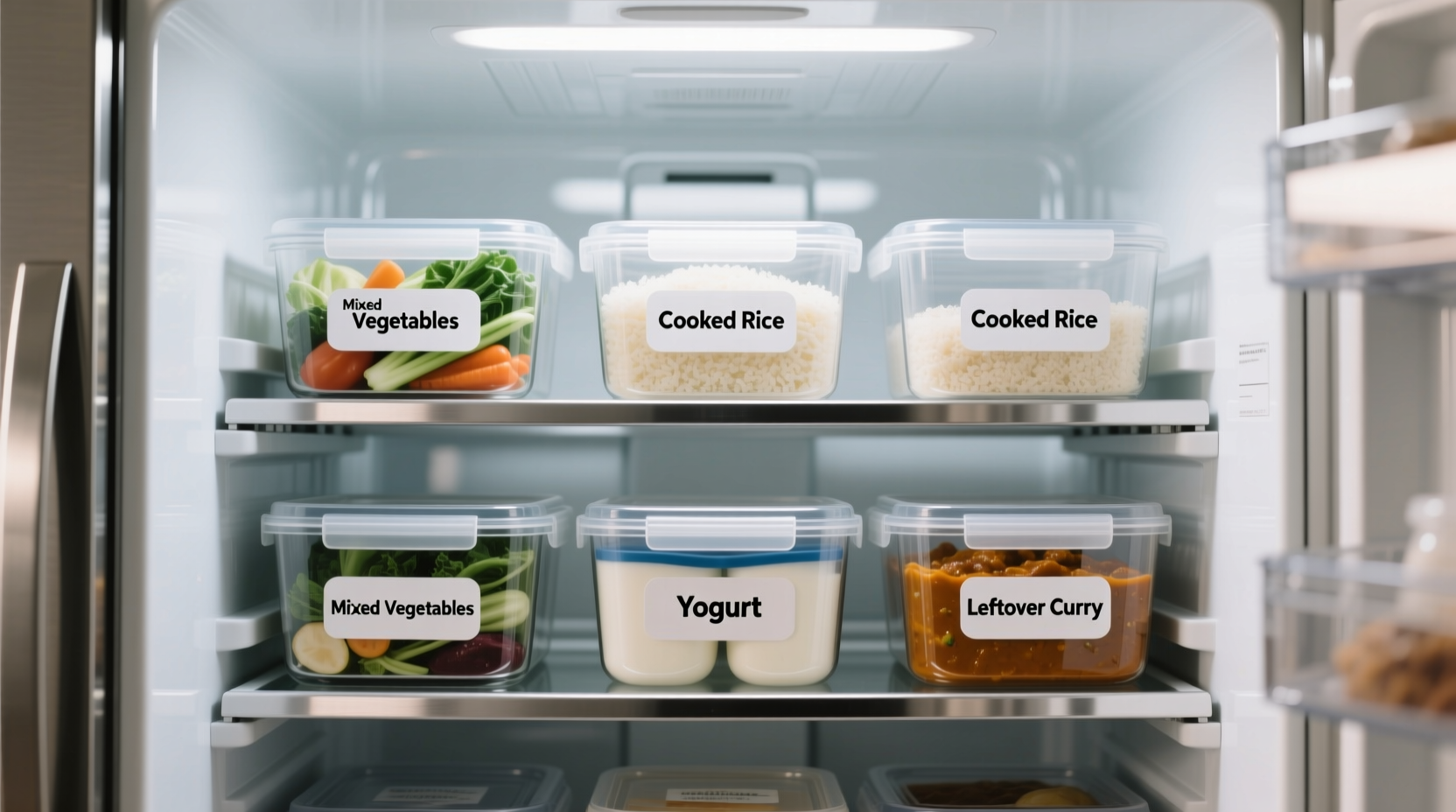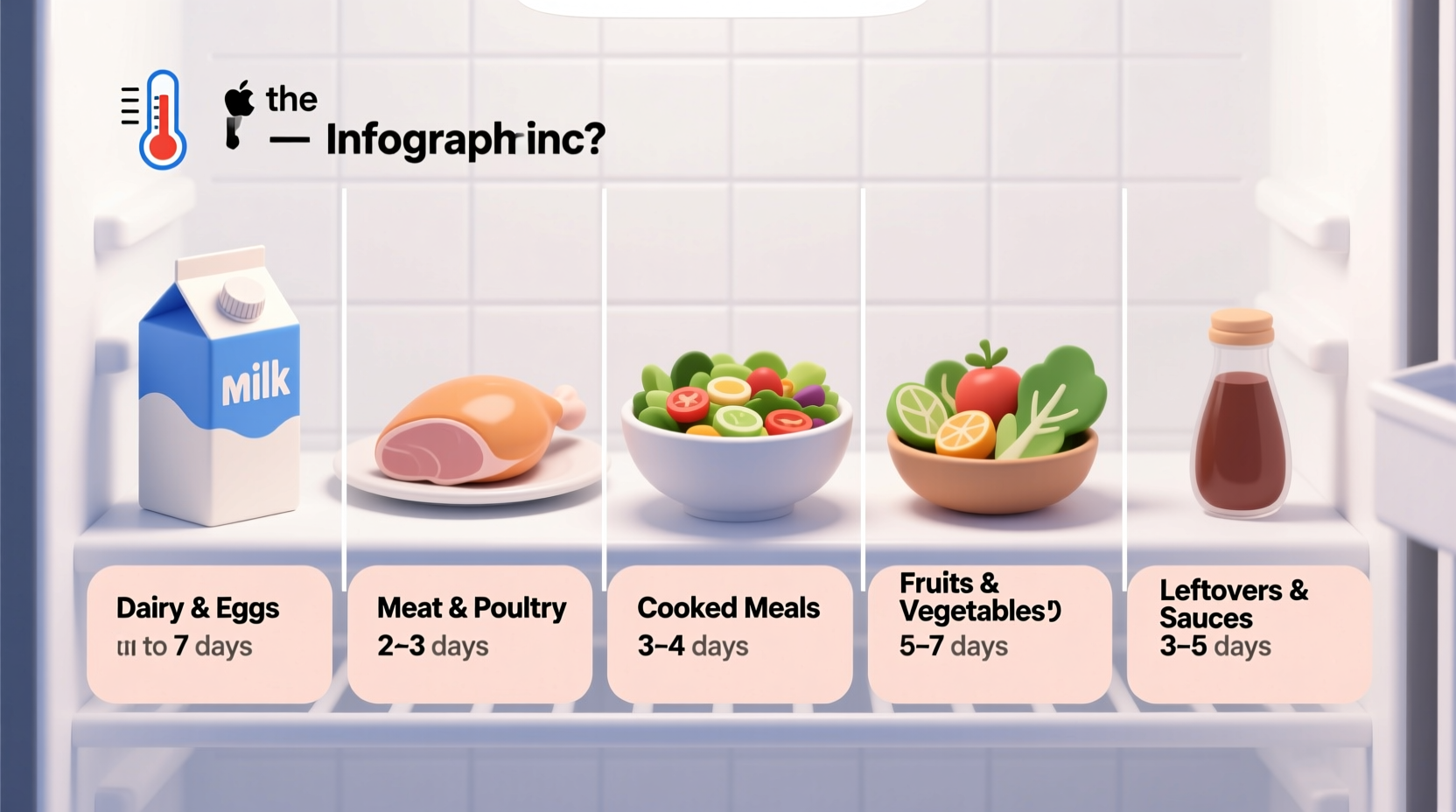Most cooked foods stay safe in the refrigerator for 3-4 days, while raw meats last 1-5 days depending on the type. Dairy products typically remain fresh for 5-7 days after opening. The USDA recommends keeping your refrigerator at or below 40°F (4°C) to maximize food safety and freshness.
Ever opened your refrigerator and wondered if that container of leftovers was still safe to eat? You're not alone. Food safety is a critical concern in every kitchen, and understanding proper refrigeration timelines can prevent foodborne illness while reducing waste. In this comprehensive guide, we'll break down exactly how long different food categories remain safe in your refrigerator, backed by the latest food safety research.
Understanding Food Safety in Your Refrigerator
Your refrigerator isn't just a cold storage unit—it's your first line of defense against foodborne pathogens. The temperature danger zone for food is between 40°F and 140°F (4°C-60°C), where bacteria multiply rapidly. Keeping your fridge at or below 40°F significantly slows bacterial growth, but doesn't stop it completely.
According to the USDA Food Safety and Inspection Service, proper refrigeration extends food safety but doesn't make food last indefinitely. Even at ideal temperatures, chemical changes and enzyme activity continue, affecting both safety and quality.
Essential Refrigerator Temperature Guidelines
Before we dive into specific food timelines, ensure your refrigerator is set correctly:
- Ideal refrigerator temperature: 35°F-38°F (1.7°C-3.3°C)
- Maximum safe temperature: 40°F (4.4°C)
- Use an appliance thermometer to verify actual temperature
- Cold spots vary within your refrigerator—use the back of shelves for longest storage
Research from the Centers for Disease Control and Prevention shows that for every 1°F above 40°F, the rate of bacterial growth increases by approximately 20%. This seemingly small difference dramatically impacts how long can food last in the fridge.
Comprehensive Food Storage Timeline Reference
Use this detailed reference guide for common food items. These timeframes represent the maximum recommended storage periods for optimal safety and quality.
| Food Category | Item | Refrigerator Storage Time | Special Notes |
|---|---|---|---|
| Dairy Products | Milk (opened) | 5-7 days | Check expiration date; smell test before use |
| Cheese (hard, like cheddar) | 3-4 weeks | Wrap in wax paper, not plastic | |
| Cheese (soft, like brie) | 1-2 weeks | Discard if mold appears beyond surface | |
| Yogurt | 1-2 weeks past date | Separation is normal; stir before eating | |
| Meat & Poultry | Raw ground meats | 1-2 days | Cook within timeframe; never refreeze thawed ground meat |
| Raw chicken/turkey | 1-2 days | Store on bottom shelf to prevent cross-contamination | |
| Raw beef/steaks | 3-5 days | Vacuum-sealed extends timeframe | |
| Cooked meats | 3-4 days | Store in shallow containers for rapid cooling | |
| Leftovers & Prepared Foods | Casseroles | 3-4 days | Cool completely before refrigerating |
| Soups & stews | 3-4 days | Reheat to 165°F before serving | |
| Takeout meals | 3-4 days | Transfer from delivery containers immediately | |
| Fruits & Vegetables | Leafy greens | 3-7 days | Store with paper towel to absorb moisture |
| Whole fruits | 1-2 weeks | Store separately from vegetables | |
| Cut fruits | 3-5 days | Sprinkle with lemon juice to prevent browning |

Factors That Affect How Long Food Lasts in the Fridge
Several variables impact the actual shelf life of refrigerated foods beyond the general guidelines:
Temperature Consistency
Opening your refrigerator door frequently can raise the internal temperature by 30°F within 20 seconds. The FDA Food Code emphasizes that temperature fluctuations significantly reduce how long can food last in the fridge. Use the "two-hour rule"—never leave perishable food out for more than two hours (one hour if room temperature exceeds 90°F).
Storage Methods Matter
How you store food affects longevity:
- Airtight containers extend freshness by preventing moisture loss and odor transfer
- Vacuum sealing can double or triple storage times for many foods
- Proper wrapping techniques (using wax paper for cheese, paper towels for greens) maintain optimal humidity
- Strategic placement: back of shelves (coldest), bottom shelf for raw meats
Food Composition Factors
The natural properties of food impact refrigerator longevity:
- Acidity: Higher acid foods (like tomatoes) last longer
- Salt content: Preserves foods but can draw out moisture
- Sugar content: Can crystallize or ferment over time
- Natural enzymes: Continue breaking down food even when cold
Recognizing When Food Has Gone Bad
Timeframes are guidelines, but your senses provide the final determination. Look for these spoilage indicators:
Visual Clues
- Mold growth (except on hard cheeses and firm vegetables where you can cut away 1-inch around affected area)
- Unusual color changes (grayish beef, slimy vegetables)
- Excessive liquid separation that doesn't reincorporate
Sensory Indicators
- Off odors (sour, rancid, or "off" smells)
- Slippery or slimy texture on meats or vegetables
- Unusual taste (never taste questionable food to test)
When in doubt, throw it out. The USDA emphasizes that harmful bacteria that cause foodborne illness often don't produce noticeable changes in food appearance, smell, or taste.
Maximizing Food Safety: Practical Refrigeration Strategies
Implement these evidence-based techniques to extend how long can food last in the fridge while maintaining safety:
First In, First Out (FIFO) System
Rotate items so older products are in front. This simple practice reduces waste and ensures you consume food within safe timeframes. Label containers with dates using masking tape and a marker.
Optimal Organization Techniques
- Bottom shelf: Raw meats (in containers to prevent drips)
- Middle shelves: Dairy, eggs, and ready-to-eat foods
- Top shelf: Leftovers and prepared foods
- Door shelves: Condiments and less perishable items (door experiences most temperature fluctuation)
- Crisper drawers: Fruits and vegetables with humidity controls adjusted appropriately
Smart Leftover Management
Follow these professional kitchen practices:
- Cool hot foods quickly by dividing into shallow containers
- Refrigerate leftovers within two hours of cooking
- Reheat to 165°F internal temperature
- Never put large pots of hot food directly in the refrigerator
Special Considerations for Common Food Categories
Dairy Products: Beyond the Basics
While most dairy lasts 5-7 days after opening, certain factors extend or reduce shelf life:
- UHT (ultra-high temperature) processed milk lasts longer unopened but same timeframe once opened
- Cheese wrapped in parchment paper lasts longer than plastic wrap
- Butter can be stored in the fridge for 2-3 weeks or frozen for months
- Opened cream cheese should be used within 10 days
Leftovers: The 3-4 Day Rule Explained
The USDA's 3-4 day guideline for leftovers isn't arbitrary. Research shows that after three days, the risk of Listeria growth increases significantly in refrigerated prepared foods. This timeline assumes your refrigerator maintains a consistent 40°F or below. If your fridge runs warmer, reduce this timeframe accordingly.
Raw Meats: Critical Timeframes
Raw meats have the shortest refrigerator lifespans due to their high moisture content and nutrient profile that bacteria love:
- Ground meats: Maximum 1-2 days (increased surface area accelerates spoilage)
- Poultry: Maximum 1-2 days (more prone to salmonella contamination)
- Beef steaks/roasts: Maximum 3-5 days
- Lamb and pork: Maximum 3-5 days
When Freezing Is the Better Option
For foods you won't use within recommended refrigerator timeframes, freezing preserves safety indefinitely (though quality degrades over time). The USDA confirms that food frozen at 0°F remains safe indefinitely, though quality diminishes after certain periods:
- Raw meats: 4-12 months depending on type
- Cooked meats: 2-6 months
- Leftovers: 2-3 months for best quality
Always label frozen items with contents and date. For best results, freeze foods in portion sizes you'll use and remove as much air as possible from packaging.
Food Safety Myths Debunked
Let's address common misconceptions about refrigerator storage:
- "If it looks and smells fine, it's safe to eat" - Many dangerous bacteria don't affect appearance or smell
- "The sniff test is reliable" - Pathogenic bacteria often don't produce noticeable odors
- "Refrigeration stops bacteria growth completely" - It only slows growth; some bacteria thrive in cold temperatures
- "Leftovers are safe until they develop mold" - Mold is just the visible part; bacteria may have spread throughout
Practical Steps to Reduce Food Waste While Maintaining Safety
Follow this actionable plan to maximize your refrigerator's potential:
- Check your refrigerator temperature weekly with a separate thermometer
- Conduct a "fridge audit" every Sunday to identify items nearing expiration
- Plan meals around soon-to-expire items ("use-it-up" meals)
- Store foods properly using the organization guidelines above
- Label all containers with contents and date
- Follow the FIFO (first in, first out) system
- When in doubt about safety, discard the item
Remember that food safety guidelines exist to protect your health. While reducing food waste is important, never compromise on safety when it comes to potentially spoiled food.











 浙公网安备
33010002000092号
浙公网安备
33010002000092号 浙B2-20120091-4
浙B2-20120091-4